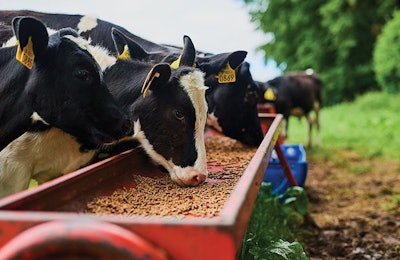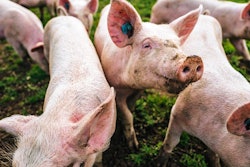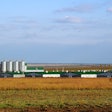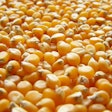
Experts are seeing an increase of fungal disease in feed ingredients, which can adversely affect livestock health
Experts at North Dakota State University (NDSU) are warning of an increase in toxic ergot contamination in livestock feed throughout the state.
Ergot is a fungal disease that primarily affects rye, triticale, barley and wheat, and which adversely affects the health and productivity of livestock.
“This spring’s cool and damp weather delayed planting of cereal grains,” said Andrew Friskop, NDSU Extension plant pathologist. “In June, this weather contributed to the germination of ergot sclerotia, leading to spore release and infection in grass hosts.”
The fungus produces the ergot responsible for the ergot alkaloid group of mycotoxins and parasitizes the seed heads of plants at the time of flowering. It is often seen in years where wet weather prevails in the spring and early summer, during the flowering stage of cereal crops or when low temperatures are present during grain fill. Ergotism is most prevalent in late summer, when the seed heads of grass mature.
“The key to the successful treatment of ergotism in animals is early recognition of the clinical signs and removal of the animals from ergot-contaminated grains, hay, processed feeds or pastures,” said Gerald Stokka, NDSU Extension veterinarian and livestock stewardship specialist.
Clinical signs in cattle are gangrenous (death of soft tissue) or cutaneous (affecting the skin) ergotism, lameness, elevated body temperature, reduction in feed intake and possibly reduced fertility, he said.
“Milk production can decrease in animals exposed to ergot alkaloids,” said Michelle Mostrom, a toxicologist at the NDSU Veterinary Diagnostic Laboratory.
“The risk of ergotism increases in pregnant and lactating cows,” Stokka said. “Watch mammary development in susceptible animals for earlier recognition of the disease. Also, visually monitor feed for the presence of ergot sclerotia.”
Evaluate grain for toxicity
The amount of ergot alkaloids in sclerotia varies widely. Ruminants consuming rations with 0.3% to 1% or more sclerotia can develop gangrenous ergotism. Researchers estimate that ergot alkaloid concentrations between 0.2 and 0.8 milligram per kilogram or part per million in the total feed ration can produce ergotism in livestock.
Because of the huge variation of different ergot alkaloid concentrations in individual sclerotia, the evaluation of sclerotia in grain by weight for toxicity is misleading. Mostrom recommends producers submit a representative sample of grains and grasses to a veterinary diagnostic lab for ergot alkaloid testing before feeding it to livestock.
Experts recommend that producers also avoid feeding animals grain screenings, which can contain a higher proportion of ergot bodies. Screenings can contain many seeds or material.
Karl Hoppe, extension livestock systems specialist at NDSU’s Carrington Research Extension Center, said identification of ergot in grain screenings is important. He recommends producers look for black kernels and break them in half. If the black kernel is white on the inside, it’s indicative of ergot. If the center is black, it might be rat feces instead of grain. Both should be avoided for livestock feed.
One of the oldest known mycotoxicoses
Ergot infection reduces grain quantity and quality. It replaces grain kernels with poisonous alkaloid-containing ergot sclerotia – hardened bodies that are formed by the fungus.
Ergotism is one of the oldest known mycotoxicoses. Ergot alkaloids exert toxic effects in all animal species, and the most prominent toxic signs can be attributed to the interaction of ergot alkaloids with adrenergic, serotinergic and dopaminergic receptors. Ergot alkaloids have gained considerable relevance due to, among other things, ergopeptine-producing endophytes causing breeding problems in animals. The amount and pattern of alkaloids produced varies between fungal strains, the host plant and geographical region.
The term ergot alkaloid refers to a diverse group of some 40 toxins.














